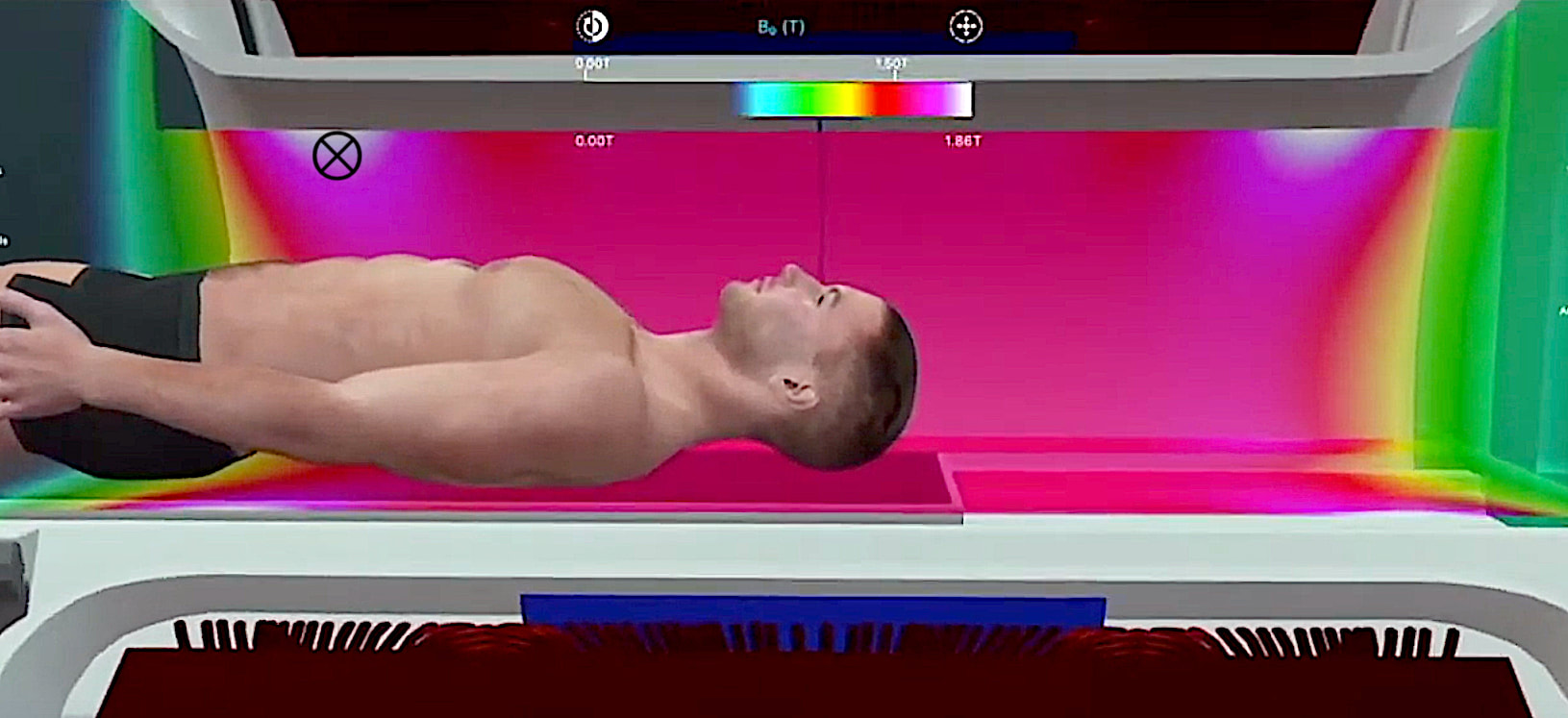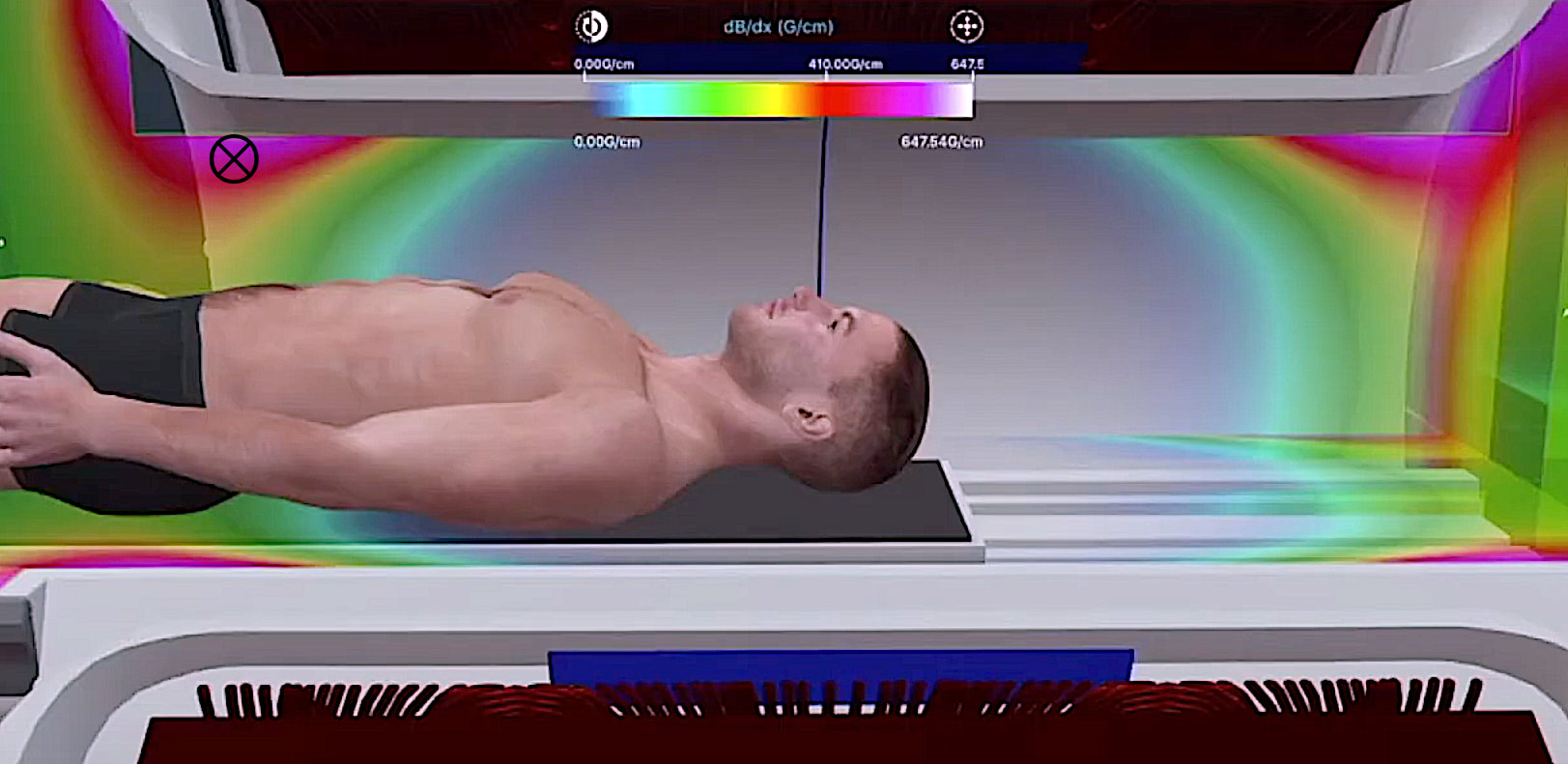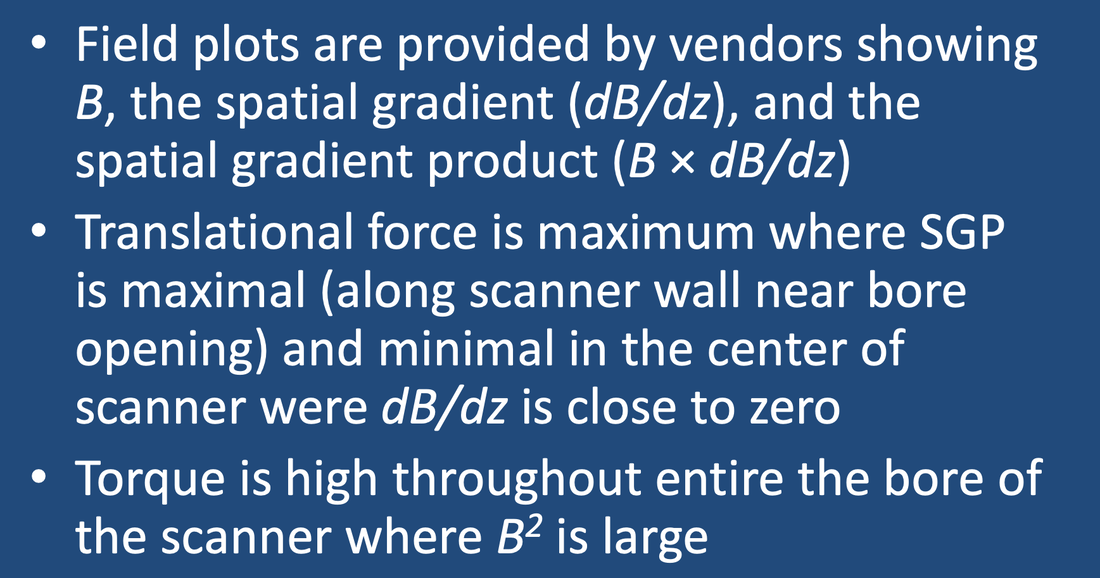As discussed in the prior Q&A, the maximum translational torque on a metallic object depends square of the local magnetic field (B²), while the maximum translational force depends on the local magnetic field B times the spatial gradient (SG), dB/dz, an entity known as the spatial-gradient product (SGP), or (B)(dB/dz). When one purchases an MR system, the vendor provides detailed field maps to help identify each of these fields in and around the scanner. These exact values are important because MR Conditional implants frequently have limits on the maximal SG or SGP through which they are allowed to pass. Below are field plots applicable to our Siemens Prisma 3.0T scanner.
The sites marked with ⊗ in the diagrams represent the highest value for each parameter.
|
As can be seen from these diagrams, the spatial gradient (dB/dz) and SGP are highest about a quarter to a half meter behind the face of the scanner along its inner bore. So a metal object at this location would experience the highest translational force. In the center of the scanner bore, the both dB/dz and the SGP are close to zero, so no translational force would be experienced once the object is fully inside the scanner. Torque is maximal where the B field is highest, which is generally close to the maximal sites for SG and SPG at the scanner bore entry.
|
An interesting feature from these graphs (not widely recognized) is that the static magnetic field typically exceeds the rated value (e.g. 1.5T or 3.0T) by as much as 30% near the the bore entry along the inner wall. Since torque is proportional to the square of the magnetic field (B²), this is the most dangerous place for torque (although in reality anywhere inside the bore of the scanner has very high B² and is nearly as dangerous).
My colleague Manny Kanal has developed a software application, MagnetVision™ (Advanced Magnetic Analytics, LLC), that provides a highly visual color representation of these fields that I find tremendously instructive. Two examples for the main field (B) and spatial gradient field (dB/dz) are shown below.

Spatial distribution of main magnetic field (Bo) in a GE 450W 1.5T scanner. Note that while the vast majority of the bore is homogenous with magnitude 1.5T, near the ends of the bore the field increases to as high as 1.86T at site marked with a ⊗ . (Image courtesy of Dr. E. Kanal, created using the MagnetVision™ app he created)

Distribution of the main magnetic field spatial gradient (dB/dz) in the bore of a 1.5T GE 450W scanner. Note that for most of the bore, (dB/dz) ≈ 0 (represented by dark gray). The highest spatial gradients are located along the outer edges of the bore opening, at site marked with a ⊗. (Image courtesy of Dr. E. Kanal, created using the MagnetVision™ app he created)
Advanced Discussion (show/hide)»
No supplementary material yet. Check back soon!
References
Kanal E. Standardized approaches to MR safety assessment of patients with implanted devices. Magn Reson Imaging Clin N Am 2020; 28:537-548. [DOI LINK]
Shellock FG, Kanal E, Gilk TB. Regarding the value reported for the term “Spatial Gradient Magnetic Field” and how this information is applied to labeling of medical implants and devices. AJR Am J Roentgenol 2011; 196:142-145. [DOI Link]
Kanal E. Standardized approaches to MR safety assessment of patients with implanted devices. Magn Reson Imaging Clin N Am 2020; 28:537-548. [DOI LINK]
Shellock FG, Kanal E, Gilk TB. Regarding the value reported for the term “Spatial Gradient Magnetic Field” and how this information is applied to labeling of medical implants and devices. AJR Am J Roentgenol 2011; 196:142-145. [DOI Link]
Related Questions
Which types of metal are the most dangerous around a magnetic field?
How do you calculate the magnetic force pulling a piece of metal toward the scanner?
Which types of metal are the most dangerous around a magnetic field?
How do you calculate the magnetic force pulling a piece of metal toward the scanner?



